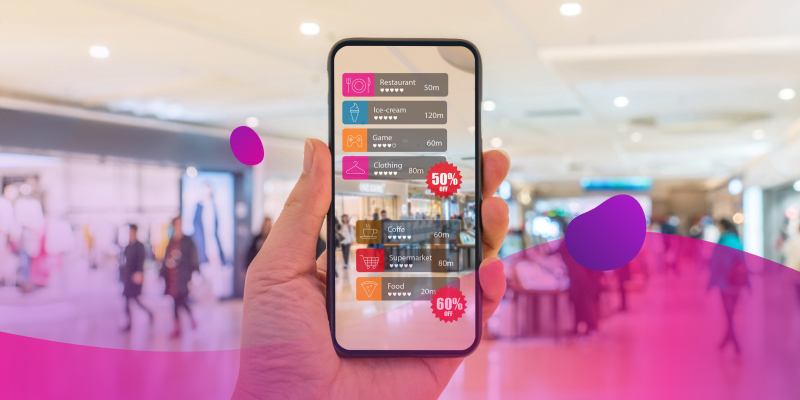TL;DR
Contextual advertising isn't about guessing who your audience is—it's about knowing where and when to show up. This guide walks you through building a strategy that works: mapping high-value content environments, choosing the top 3 contextual signals (like content type, time of day, and device), pairing creative with placement from the start, and using modular content that adapts in real time. Measure what matters—engagement, not just clicks—and keep refining. Want help turning static ads into dynamic experiences? Innervate’s got you covered.
You’re scrolling through a finance news site, deep in thought about your investment portfolio, and an ad pops up for a wealth management firm.
But it’s not just any ad; it speaks directly to market volatility and offers a guide on diversifying assets—exactly what’s already on your mind.
Now, contrast that with the generic ads that follow you around the internet, hawking products you already bought or have no interest in. As third-party cookies fade and ad fatigue reaches critical levels, marketers face a stark reality: Traditional audience targeting isn’t cutting it.
Contextual advertising today means making your ad profoundly relevant because of its surroundings, transforming it from background noise into a compelling touchpoint.
But how are you supposed to leverage that?
Start here.
Map Your Most Valuable Content Environments
Knowing who your audience is remains crucial, but for truly effective contextual advertising or well-placed dynamic content, you also need to dig into the psychographics and current intent signals specific to digital spaces—from web pages to digital billboards and in-store screens.
To do that, you might:
- Identify key environments: Pinpoint specific publishers, content categories, or even individual articles that naturally align with your brand's message or a particular stage of your customer’s journey. Are your target outdoor adventurers researching hiking trails, or are they browsing reviews for new camping gear? Are your busy working parents stuck in evening commute traffic driving past digital billboards advertising family-style to-go dinner options, or are they on a train looking up fast and easy one-pot recipes? Answering this helps you find their digital "watering holes.”
- Look for adjacent interests: Beyond direct topical relevance, consider what broader interests or current events might influence a customer’s state of mind. A luxury car brand, for instance, isn't just targeting high-net-worth individuals on financial news sites. They're also actively seeking content environments such as travel blogs featuring exotic destinations, articles on high-performance hobbies, or even luxury watch review sites.
Define Your Top 3 Contextual Advertising Signals That Matter Most
Prioritize the signals most relevant to your specific campaign goals, recognizing that fewer, highly relevant signals can often outperform an overly complex array.
For instance, consider these critical signals:
- Content location or environment: This is the foundational signal, but push for granularity. Instead of broadly targeting "finance content," focus on "financial planning for millennials," "sustainable investment trends," or even the specific location of a digital billboard or digital sign. The more precise the content category or physical location, the more tailored your ad can be.
- Time of day or week: User intent and mood often shift throughout the day. A commuter seeing a digital billboard at 8 a.m. might be looking for quick coffee deals, whereas at 7 p.m., they might be exploring dinner options.
- Device type: Whether someone is on a mobile phone, a tablet, or a desktop implies different engagement patterns and attention spans. A mobile user might be on the go, necessitating a concise, scannable message, whereas a desktop user might be more receptive to longer-form content or interactive experiences.
Pair Creative with Placement Early—Not Post-Flight
One of the biggest missteps in contextual advertising is designing a generic ad and then attempting to retrofit it into various contexts. For true impact, content should be deeply informed by context from the outset.
Want to know how to make that happen?
Here’s what we recommend:
- Involve creative early: Engage your creative teams early to brainstorm how ad copy, visuals, and calls-to-action (CTAs) can directly reference or subtly acknowledge the content environment. For instance, if a digital billboard is placed near a beach during a heatwave, an ad for a local ice cream shop might feature a refreshing visual and copy like, "Beat the Heat! Cool Down with Our New Summer Flavors."
- Consider emotional resonance: What message truly lands in this specific context? An ad for a vacation rental on a travel blog might highlight adventure and exploration, whereas the same rental advertised on a family-focused website might emphasize comfort and child-friendly amenities. The underlying product is the same, but the contextual framing makes all the difference.
Build Reusable Creative Modules That Adapt Based on Context Rules
Manually creating unique ads for every conceivable context is impossible. This is where the power of modular content and dynamic creative optimization comes into play.
First, your ad creative should be broken down into interchangeable components: headlines, body copy blocks, image assets, and CTAs.
Then, establish clear rules or parameters for how these modules combine based on your defined context signals. For instance:
- If the context is a digital billboard on a highway during rush hour, automatically pair a headline like "Smooth Commute Ahead?" with an image of an open road and a CTA to "Find a Quicker Route on Our App."
- If the context is an in-store digital display in the produce aisle and it's morning, deploy a headline like "Fresh Start to Your Day!" with an image of vibrant fruit and a CTA to "Scan for Smoothie Recipes."
Run Tests to Measure Contextual Advertising Success
The ultimate measure of a successful contextual advertising strategy isn't just whether an ad was seen, but whether the context genuinely amplified its effectiveness.
The question to answer is: Is the ad truly more interesting and impactful because of where it showed up, feeling less like an interruption and more like a natural part of the content experience?
To answer that question, you might:
- Design context-specific multivariate tests: Structure your tests to isolate contextual relevance as the primary variable. For example, run an ad promoting a new beverage brand on the ‘Drinks’ page of an online food and beverage publication. Then compare it with another version on the same publication’s ‘Food’ page with modified copy and imagery positioning it as the perfect match for burgers.
- Measure beyond clicks: Although clicks are important, look at deeper engagement metrics. Is time on page higher after a contextual ad? Is the bounce rate lower? Can you even gauge direct brand sentiment or recall if your tracking allows for it? Pay attention to how the contextual ads influence post-click behavior.
- Refine continuously: Use performance data to refine your context signals and creative pairings. Building a culture of experimentation will be key to optimizing continuously and ensuring your contextual strategy evolves with your audience and the dynamic digital landscape. This iterative process ensures you're always improving and adapting.
By systematically mapping environments, defining key signals, pairing creative with placement early, and leveraging modular content, you can move beyond generic ads to deliver experiences that genuinely resonate.
Are you struggling to connect creative assets with real-time contextual signals?
Do your current personalization efforts feel fragmented across channels?
If so, we’re here to help.
Reach out to our team to learn more about how Innervate helps marketing teams achieve true dynamic content orchestration and drive powerful creative performance.





